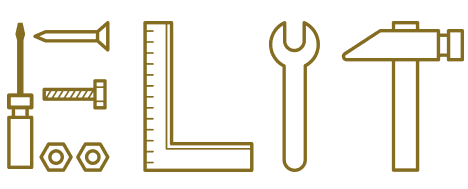New Paragraph
Our Philosophy
"It's all about the Process"
The Seven Pains
We can distill our process philosophy down to three simple statements:
- 1) Everything we do in our work can be viewed as a process
- 2) Limitless opportunities exist to improve every process
- 3) Seven distinct pains help us identify what to fix next
Sometimes at home they're referred to as "routines", like getting ready in the morning or putting the kids to bed. At work, you participate in and own many processes, and it is important to think of them as recurring processes because when you think about much time and effort it takes, or how many others have to do the same thing, you have greater appreciation for how much of an impact it is to make things better for your future self and for others.
“If you can't describe what you are doing as a process, you don't know what you're doing.”
- W. Edwards Deming
We’ve spent decades studying and improving processes, and investigating the commonalities of why some processes work better than others. We've adopted the best elements from Deming's PDSA cycle, Six Sigma, Lean Manufacturing, Kaizen, Theory of Constraints, and Scrum, among others, and combined them into our own process that reveals process problems based on a common set of pains and helps address the underlying root causes of any
business challenge.
Our "Seven Pains" framework enables you to use simple observations about the behavior of the process to help determine what to fix first and how you can do it.
Think about one of your current work challenges and then use this carefully-sequenced list to find out what to do next to overcome it.
New Paragraph
Seven Pains
Address these pains in order to improve how your organization works
1 - Reliability
Often, the work simply doesn't get completed without intervention
2 - Quality
The work doesn't consistently meet requirements the first time
3 - Utilization
You have unbalanced workload and too many or to few people
Our Founder
Don Gillespie started out adult life as an enlisted soldier in the US Army. Upon honorable discharge, he studied Operations Management and Transportation and Logistics at The Ohio State University.
In his first few years after graduating, Don worked in inventory management and analysis in the automotive manufacturing sector while also obtaining APICS CPIM certification, an MBA, and becoming a Lean Six Sigma Black Belt- which is when he found is passion for continuous process improvement.
While progressing through various Supply Chain, Project Management, and Leadership roles, Don became proficient with Microsoft Excel, VBA Macros, Oracle ERP, various query and reporting tools, Robotic Process Automation (RPA) programming, RFID scanning, and any other hardware and software he could find that could help make people's jobs easier and make processes more accurate, repeatable, and efficient.
After 8 years in automotive, he moved on to retail consumer goods as the Global Supply Chain Manager for a small manufacturer. There he grew the Sales and Operations Planning (S&OP) process from infancy to maturity, re-engineered the demand forecasting process, developed all new tools and processes for inventory optimization, and continued to add technical expertise in various applications including JD Edwards ERP.
Don then left industry to join federal government service in Operations Research at the Defense Logistics Agency. This gave him the opportunity to lead a group of talented SAS developers and analysts in efforts combined lean commercial practices with data science to to tap vast DoD data sets and build predictive analytics and forecasting solutions, analyze the root causes of business drivers, build countless models, and re-engineer large-scale supply chain processes to leverage data and automation in an SAP ERP environment.
Don's direct Government service ended when his wife took a job in the DC area, and he became a supply chain consulting manager in a Big 5 consulting firm where he provided thought leadership in supply chain planning, advanced analytics, and process robotics. He also dove into the Cloud in a groundbreaking Federal Platform as a Service (PaaS), ERP project. In doing so became adept with the Salesforce Lightning platform and a passionate disciple of Agile deployment and Scrum.
Don lives with his amazingly supportive wife of 20+ years and their two boys in Bethesda, Maryland. He started Bethesda Innovation Group to focus his efforts exclusively on his professional passion: Improving the processes and tools that Government workers use to perform their mission.









